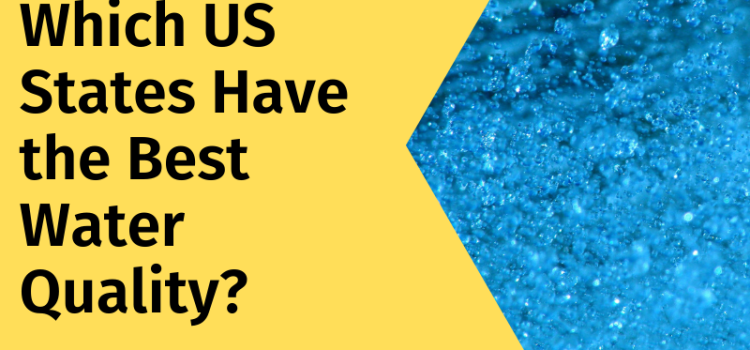Last updated on March 29th, 2025 at 01:16 pm
In a significant move to protect public health, the Environmental Protection Agency (EPA) has proposed new regulations to limit the presence of harmful “forever chemicals” in drinking water. These chemicals, known as per- and polyfluoroalkyl substances (PFAS), are notorious for their persistence in the environment and potential health risks.
What Are PFAS?
PFAS are a group of man-made chemicals used in various industrial and consumer products, including non-stick cookware, water-repellent clothing, and firefighting foams. Due to their widespread use and resistance to degradation, PFAS have been detected in water sources across the globe. Exposure to these chemicals has been linked to adverse health effects, including cancer, liver damage, and immune system disruption.
For the first time, the U.S. federal government has established national limits on levels of harmful per- and polyfluoroalkyl substances (PFAS) in drinking water. These chemicals, commonly known as “forever chemicals,” have been widely used in consumer products but take a long time to break down in the environment. They have been linked to various health problems, including cancer, heart issues, and developmental damage in children.
Read: 7 Science-Backed Advantages of Drinking Purified Water
The New Rule
The Environmental Protection Agency (EPA) recently announced the first nationwide, legally enforceable limits on PFAS. Under this new rule, public water systems must limit the levels of several PFAS compounds. Specifically, the limits for two types of PFAS—PFOA and PFOS—are set at 4 parts per trillion. Additionally, the rule addresses four other regulated compounds: PFNA, PFHxS, PFBS, and “GenX chemicals.”
Significance and Impact
The new limits are a crucial step toward improving the safety of our tap water. Approximately 100 million people will experience reduced PFAS exposure due to these regulations, potentially preventing thousands of deaths. Scott Faber, senior vice president of governmental affairs for the Environmental Working Group, calls this the “single most important step” taken to address PFAS.
Background on PFAS
PFAS have been used since the 1940s in various products, including stain-resistant fabrics, cleaning products, cookware, food packaging, paints, and firefighting foams. Despite some types of PFAS no longer being in use, their strong carbon-fluorine bonds make them persistent in the environment. They are found in air, water, soil, and even the blood of animals and humans worldwide. Research has linked PFAS exposure to serious health issues, emphasizing the importance of regulating their presence in drinking water.
Implementation Timeline
Water utilities have five years to comply with the new standards. During this period, they must test for and reduce levels of the specified PFAS compounds. The EPA aims to protect communities from exposure to these harmful chemicals, ensuring safer drinking water for all by 2027.
Read: Water Stress: A Global Problem That’s Getting Worse
Reducing PFAS contamination in water sources is crucial for community health. Here are some effective strategies:
1. Upgrading Water Treatment Facilities
Investing in advanced water treatment technologies, such as activated carbon filtration, ion exchange, and high-pressure membranes, can effectively remove PFAS from drinking water.
2. Regular Monitoring and Testing
Communities should implement regular monitoring and testing of water sources to detect PFAS levels early. This helps in taking timely action to mitigate contamination.
3. Source Control
Identifying and controlling sources of PFAS contamination, such as industrial discharges and firefighting foam usage, can prevent these chemicals from entering water supplies.
4. Public Awareness and Education
Educating the public about PFAS and their sources can encourage community members to avoid products containing these chemicals and support local efforts to reduce contamination.
Read: 5 Ways Reverse Osmosis Water Helps Boost Hair Health
5. Policy and Regulation
Advocating for stricter regulations and policies at the local, state, and federal levels can help limit the use and discharge of PFAS, reducing overall contamination.
6. Collaboration with Industry
Working with industries to develop and implement best practices for managing and disposing of PFAS-containing materials can significantly reduce environmental contamination.
7. Research and Innovation
Supporting research into new technologies and methods for detecting and removing PFAS can lead to more effective solutions in the future.
By taking these steps, communities can significantly reduce PFAS contamination in their water sources, ensuring safer drinking water for everyone.
In conclusion, the EPA’s bold new limits on PFAS in drinking water represent a major advancement in public health protection. By addressing the pervasive issue of forever chemicals, the EPA is paving the way for a healthier future.
Sources:
https://www.ewg.org/news-insights/news-release/2023/03/epa-proposes-bold-new-limits-tackling-forever-chemicals-drinking
https://www.smithsonianmag.com/smart-news/epa-sets-first-federal-limits-on-dangerous-forever-chemicals-in-drinking-water-180984135/
https://www.epa.gov/newsreleases/biden-harris-administration-finalizes-first-ever-national-drinking-water-standard











